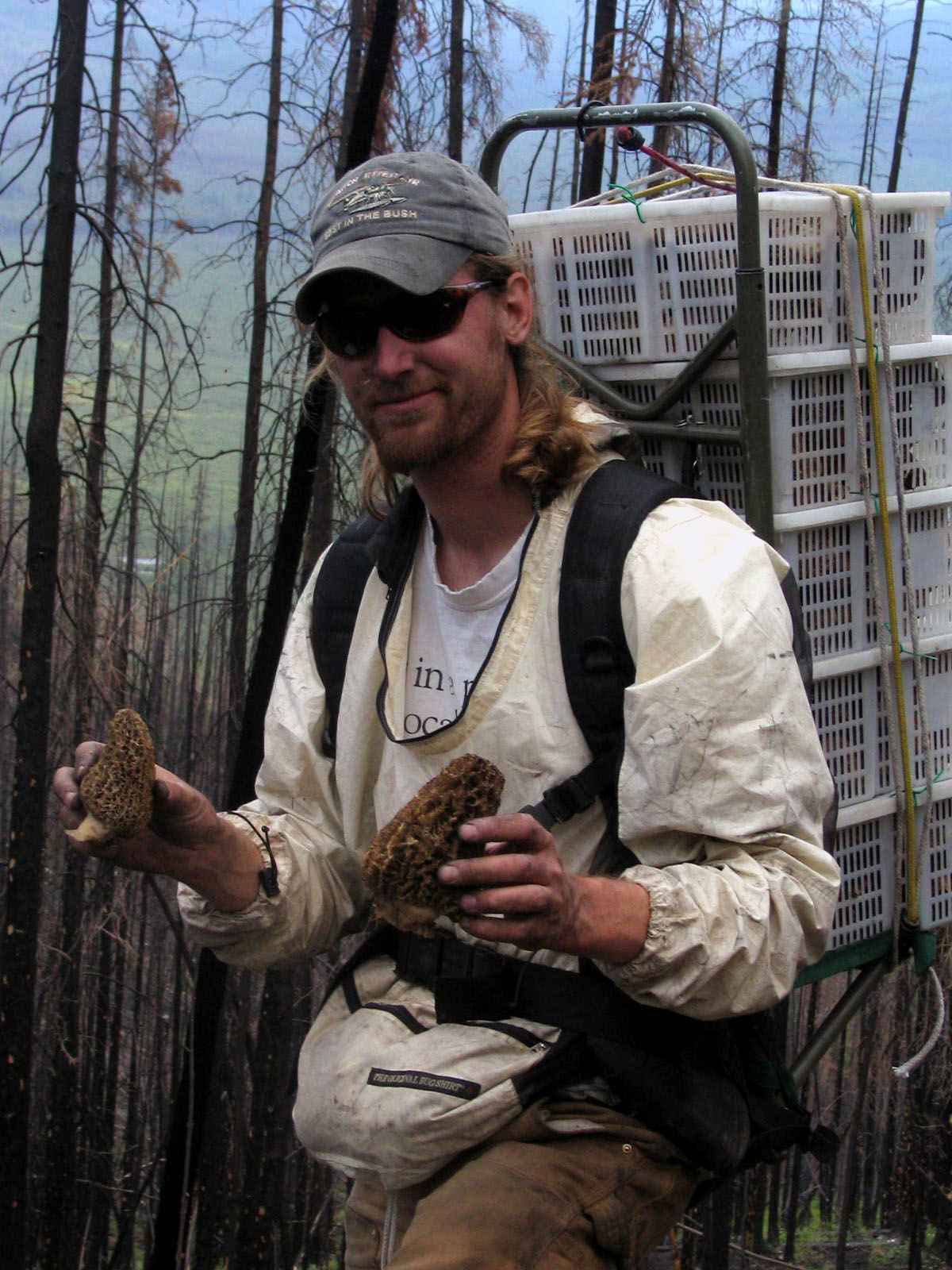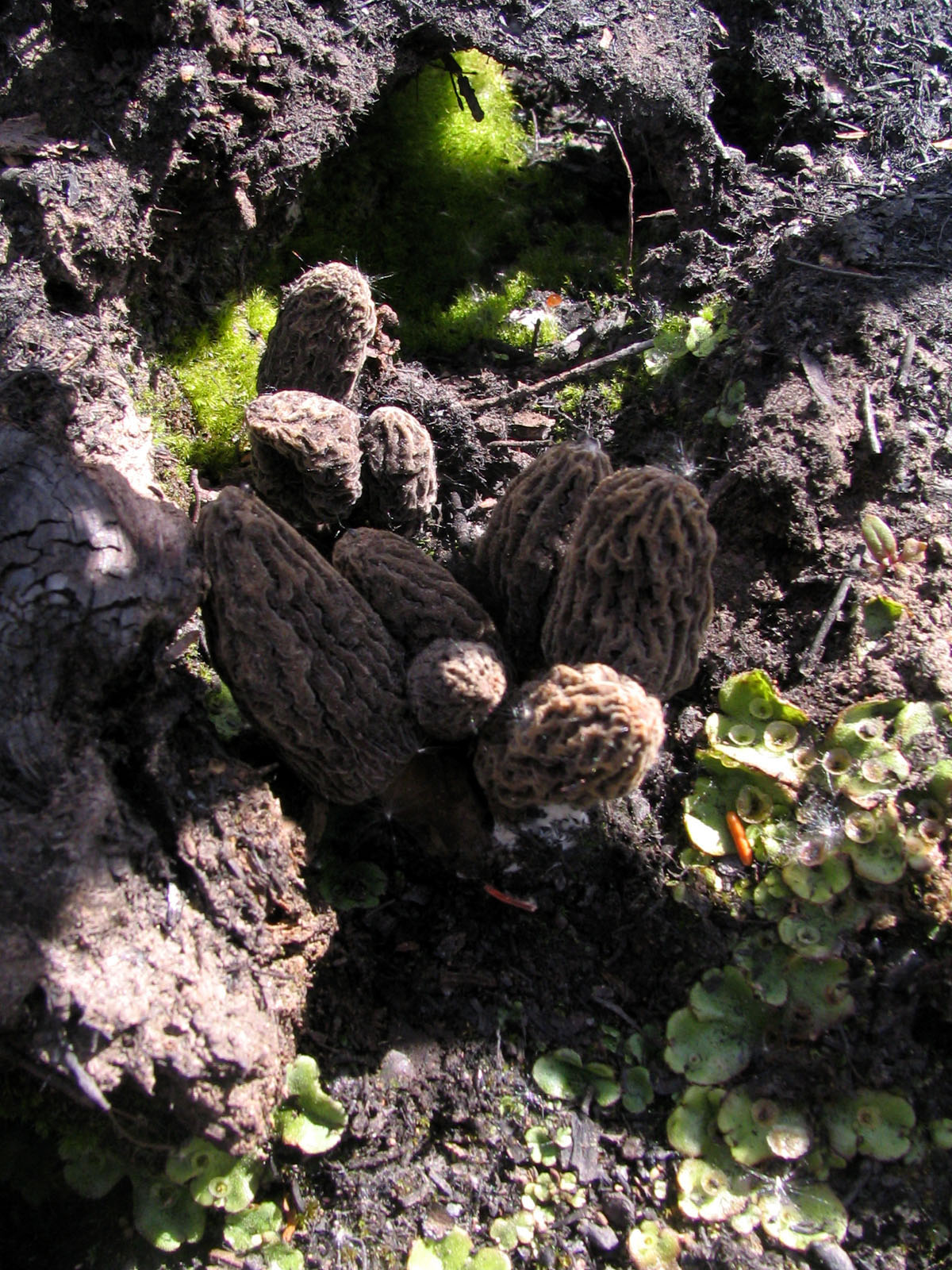
Morel Superiority
At the farmers markets of the mountain west, it’s common to find morel mushrooms for sale in little baskets. They look gnomish, with honeycomb-like caps atop stubby stalks, each individual with a slightly different shape and posture. Wild to the core, the morel has refused all efforts at domestication and only grows only where it chooses. This means every morel you’ll ever see was hunted and harvested by hand, in the wild. Morels offer mysterious woodland flavors, usually with a hint of smoke, as the vast majority are plucked from the charred ashy landscapes left behind by forest fires. From such rough and tumble upbringings, you can be sure the morels have stories.
Morels are so sumptuous and easy to prepare, and keep so perfectly when dehydrated, they are easily my choice for top wild mushroom status. I’ve hunted those freaky fungal fruits, combing the burned mountainsides of Montana, Oregon, Washington, British Columbia and Alaska in search of clusters. When you go after morels, you pick up a few stories of your own.
Once I got chased by a punky moose, a scrawny juvenile delinquent testing his limits. I turned the tables with some hurled rocks and sticks and sent the bully running. And then, like some cartoon, he turned around and chased me again. I’ve gotten lost, run out of water, and had to drink from swamps to keep going through the eerie silence of a burnt forest. And when you eat the mushrooms collected during those grueling, day-long games of hide and seek, you relive those sweaty moments, the particles and the memories of the days where all that matters are the mushrooms.
Nobody is really sure how or why morels appear after a fire. There hasn’t been much research. Most of the knowledge of morel ecology is known to the pickers themselves, who are less inclined to share what they know than the average scientist.
If you know your way around a campfire, you might be able to learn something at picker camp, spots in the forest where rival harvesters form uneasy communities out of necessity. In these sometimes rowdy places, mushroom buyers set up tables outside of their vehicles and compete for the harvesters and their bounty. The price changes frequently, sometimes hourly. Some buyers are known to be untrustworthy, while the pickers, who can be cagey, gruff, even hostile, are the ones who will haul you out if they find you in the woods with a broken ankle. Back at camp, sometimes cabin fever creeps in. I’ll never forget the time Lady Jess leapt over a rather large fire when some fool wouldn’t pass the bottle of Yukon Jack. That was a few days before I woke to the sound of gunshots in the 2 am arctic dawn. A mushroom buyer shot up a raft that had capsized and dumped thousands of dollars worth of fresh fungus into the West Fork of Fortymile Creek.
I was in it for the mushrooms themselves, and not the money. Every time I sold my haul, I felt like I was selling my children. Each one of those magical phoenixes rising from the ashes was a little treasure that I had spotted, and felt that thrill of a successful hunt. They were my friends, and to the chagrin of the buyer at Camp Happy Mosquito, I quit selling them. I turned my Subaru into a mushroom dehydrator and brought home bags full of dried morels, and ate them for years.
Right about now, next year’s morel habitat is being created by this year’s fires, while last year’s fires have left a bumper crop in certain western states that is being harvested as we speak. Fresh morels might not be for sale in your farmers markets, but you can find them in your local fancy produce section, picked wild from the ashes of some burned forest. The following recipe for morels in sherry cream sauce is an easy starting point into the world of morel cookery.
Morel picking is challenging, and success is hardly guaranteed. After a few tries, simply buying them starts to look like a better and better deal. When you support an industry that relies on wilderness, you are supporting wilderness itself. Whether you went to the trouble and adventure of picking the morels, or forked over your hard-earned cash, the expense and adversity will melt away when the flavor shepherds your mouth to a burnt forest, the exact location of which only the morels know. And they’re not telling.
Morels in Sherry Cream Sauce
The ingredients are measured per ½ pound of fresh morels, sliced lengthwise. You can also add thinly-sliced button mushrooms to stretch out the morels without diluting the flavor. For each half-pound of button mushrooms, add the ingredients below as well. So if you were to use a half-pound each of fresh morels and buttons, double the quantities below.
2 tablespoons butter
½ medium yellow onion, minced
¼-½ cup dry sherry
zest and juice of one quarter lemon
A pinch of nutmeg
½ cup heavy cream
Salt and pepper to taste
Melt the butter in a heavy bottom pan. Add onion and mushrooms. Cook together until onions are translucent and the morels give up their moisture—about ten minutes. Add sherry, and let it cook off. Add nutmeg, lime zest and juice. Stir it around and cook a moment, then add the cream. Cook five more minutes, season with salt and pepper, and serve.

